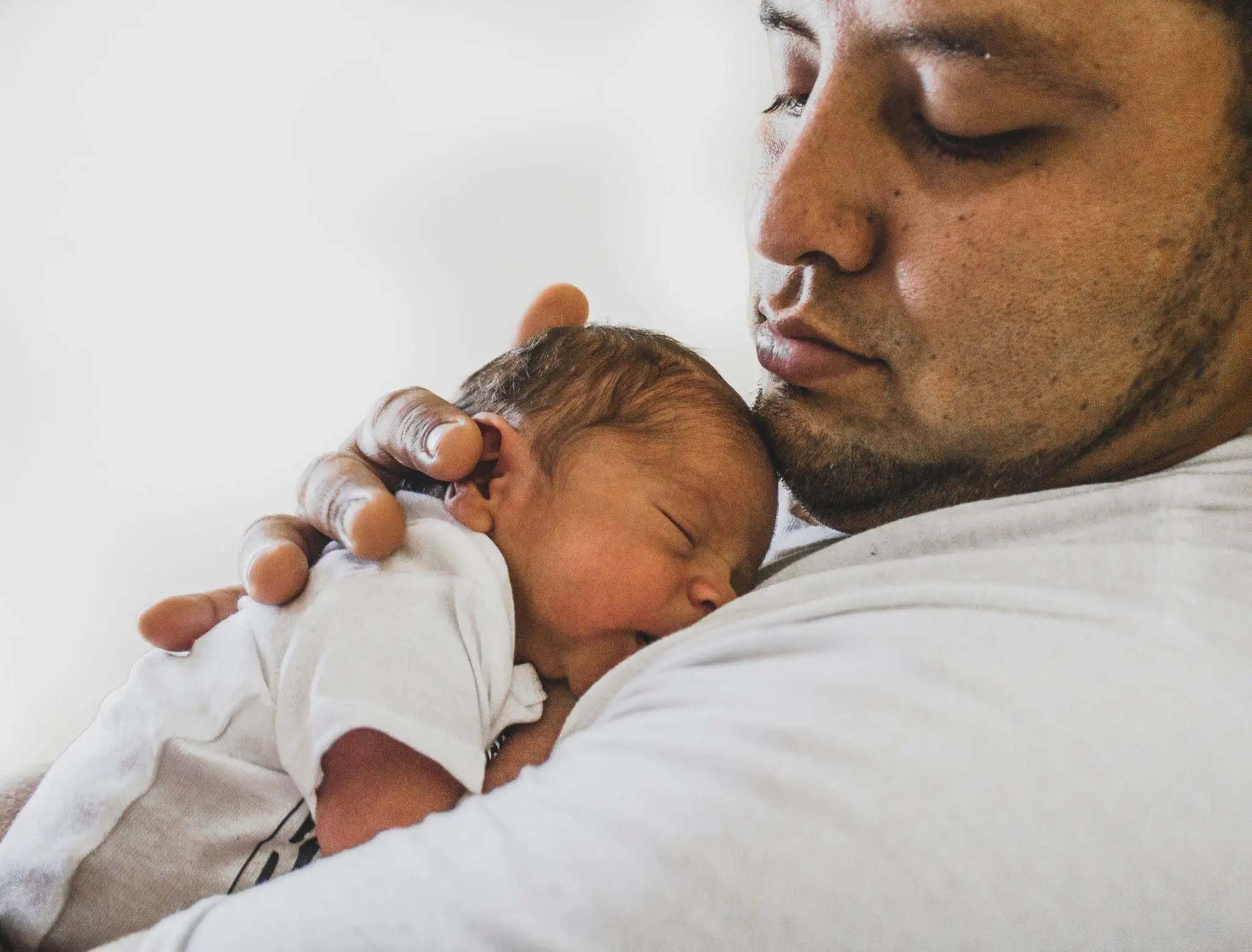Burping a baby is an essential part of feeding. It helps release the air trapped in the baby’s stomach, making them feel comfortable and preventing any discomfort. However, burping a sleeping baby can be a challenging task for new parents. It requires a gentle touch and patience to avoid waking the baby up. In this article, we will discuss effective methods on how to burp a sleeping baby without causing any disturbance.
There are several techniques that parents can use to burp a sleeping baby. One of the most common methods is the shoulder technique, where the baby is held upright with their chin resting on the parent’s shoulder. Another technique is the seated position, where the baby is propped up on the parent’s lap in a seated position. Additionally, parents can try the across the arm technique, where the baby is placed face-down across the parent’s forearm. Each technique has its advantages, and parents can choose the one that works best for their baby. In the following paragraphs, we will discuss each technique in detail, along with some tips to make the process easier.
Understanding the Need to Burp a Baby

Babies have an underdeveloped digestive system, which makes them prone to swallowing air while feeding. As a result, they may experience discomfort due to trapped air bubbles or gas in their stomachs. Burping is a simple technique that can help alleviate this discomfort and prevent spit-up or spitting up.
Most babies need to burp frequently, especially during and after feedings. This is because they drink all of their milk or formula in one go, then stop burping, unlike older kids and adults who take breaks while eating. Burping helps release the trapped air in their stomachs, which can cause discomfort and fussiness.
Babies who are gassier than others may need to be burped more often. Signs that a baby needs to be burped include fussiness, squirming, and arching their back. Parents and caregivers can try different burping techniques to find what works best for their baby.
It is important to burp a baby properly to prevent spitting up or vomiting. When a baby spits up, it means they have taken in too much air or milk, and their body is trying to get rid of the excess gas. Burping can help prevent this from happening and keep the baby comfortable during and after feedings.
In the next section, we will explore effective methods for burping a sleeping baby without waking them up.
Recognizing When to Burp Your Baby

Burping your baby is an essential part of feeding, whether you are nursing or bottle-feeding. It helps to release the air that your baby swallows during feeding and can prevent discomfort and fussiness. Knowing when to burp your baby can help to ensure that they are comfortable and happy.
For bottle-fed babies, it is recommended to burp them every 2-3 ounces of milk. For nursing breastfed babies, it is recommended to burp them when they switch breasts or after they finish feeding on one breast. However, every baby is different, and some may need to be burped more frequently than others.
It is essential to pay attention to your baby’s cues to determine when they need to be burped. Some signs that your baby may need to be burped include fussiness, squirming, pulling away from the bottle or breast, and your baby spitting back up. If you notice any of these signs, it’s a good idea to stop bottle feeding or breastfeeding and try to burp your baby.
It’s also important to note that not all babies burp every time they feed. Some babies are more efficient at swallowing air, while others may not need to burp as frequently. However, if your baby seems uncomfortable or fussy during or after feeding, it’s always a good idea to try to burp them.
Overall, recognizing when to burp your baby is an important part of caring for them. By paying attention to their cues and burping them regularly, you can help to prevent discomfort and fussiness and ensure that they are happy and content. If you have any concerns about burping your baby or their feeding habits, be sure to speak with your pediatrician or caregiver for guidance.
Effective Burping Positions

Burping the babies fall asleep can be a challenging task, but it is essential to help them relieve gas and get more air to prevent discomfort. There are several effective burping positions that parents can try to help their little ones release trapped air.
One of the most popular burping positions is the over-the-shoulder method. This position involves holding the baby upright with their chin resting on your shoulder and their body facing away from you. Gently patting or rubbing their back can help stimulate a burp. This position is suitable for babies who are sound sleepers and can be useful if a person needs to wake a baby up to continue their feeding.
Another effective burping position is the tummy-down position. This position involves placing the baby lying on their tummy across your lap or on a firm surface. Gently patting or rubbing their back can help release trapped air. This position is suitable for babies who are comfortable lying on their tummy.
The semi-upright position is also an effective burping position. This position involves holding the baby in a slightly upright position with their head and shoulders elevated. This position can be achieved by holding the baby in a sitting position or by placing them in a bouncer or swing. Gently patting or rubbing their back can help stimulate a burp. This position is suitable for babies who are comfortable sitting up.
It is essential to note that each baby is different, and what works baby burps well for one baby may not work for another. Parents should experiment with different burping positions to find what works best for their baby. Additionally, it is crucial to be gentle when burping a sleeping baby to avoid waking them up.
In summary, there are several effective burping positions that parents can try to help their sleeping baby release trapped air. The over-the-shoulder, tummy-down, and semi-upright positions are all effective methods. Parents should experiment with different positions to find what works best for their baby.
Techniques for Burping a Sleeping Baby
Burping a sleeping baby can be a challenge, but it is an important task to help prevent discomfort and gas. Here are some techniques that can help:
1. Over-the-Shoulder Position
The over-the-shoulder position is one of the most popular and comfortable positions for burping a sleeping baby. To do this, hold the baby over your shoulder with one hand supporting the baby’s bottom and the other hand patting or rubbing the baby’s back gently. This technique is suitable for babies who are sound sleepers.
2. On the Lap
Another technique that can be used to burp a sleeping baby is to lay the baby on your lap. Place the baby’s head on one of your knees and gently pat or rub the baby’s back. This position is also suitable for babies who are swaddled.
3. Sitting Position
If the baby is sleeping in a car seat or stroller, a sitting position can be used to burp the baby. Gently jiggle or bounce the seat to help the baby burp.
4. Burp Fast
Sometimes, a baby may need to burp quickly after falling asleep, and there is no time to wait for the baby to wake up. In such a situation, gently lift the baby’s chin and pat or rub the baby’s back to help them burp.
5. Baby Burping Tricks
There are some baby burping tricks that can help you burp a sleeping baby. For example, you can try to gently massage the baby’s tummy or move the baby’s legs in a bicycling motion to help release gas.
6. Burping Methods
There are different burping methods that you can use to burp a sleeping baby. Experiment with different techniques to find the one that works best for your baby.
Remember, burping a sleeping baby can be challenging, but it is an important task to help prevent discomfort and gas. Use these techniques and baby burping tricks to help your baby burp comfortably.
Handling Potential Challenges

Burping a sleeping baby can be a tricky task, especially when the baby is fussy or uncomfortable. In some cases, babies may experience reflux, which can make it difficult for them to burp or cause them to spit up.
If a baby is fussy or squirmy while trying to burp them, it’s important to try different positions to find one that is comfortable for the baby. Some babies may prefer to be held upright, while others may prefer to be held over the shoulder or on their stomach.
If a baby is spitting up frequently, it may be helpful to try gripe water or gas drops to help reduce discomfort. However, it’s important to talk to a pediatrician before giving any medication to a baby.
If a baby is crying and seems uncomfortable while trying to burp, it may be helpful to take a break and try again later. It’s important to be patient and gentle when trying to burp a baby, as forcing them to burp can cause discomfort.
Overall, handling potential challenges while trying to burp a sleeping baby requires patience, trial and error, and a willingness to try different techniques and positions. With time and practice, parents and caregivers can find a method that works best for their baby.
When to Seek Professional Help
In most cases, burping a sleeping baby is a simple task that can be accomplished by gently patting or rubbing their back. However, there are situations where seeking professional help may be necessary.
If a baby experiences discomfort or crying after feeding, it could be a sign of reflux. Reflux occurs when the contents of the stomach flow back into the esophagus, causing discomfort and pain. In such cases, it is important to consult a pediatrician for advice on how to manage the condition.
Another situation where professional help may be necessary is when a baby does not burp after feeding and seems excessively fussy or uncomfortable. In such cases, a pediatrician may recommend using gripe water, which is a natural remedy that can help soothe a baby’s stomach and relieve gas.
It is also important to seek professional help if a baby shows signs of colic, which is a condition characterized by excessive crying and fussiness. A pediatrician can help identify the underlying cause of colic and recommend appropriate treatment options.
In general, if a baby’s behavior seems unusual or concerning, it is always best to consult a pediatrician for advice. They can provide guidance based on the baby’s specific needs and help ensure that they receive the appropriate care and treatment.
Remember, every baby is different, and what works for one may not work for another. By seeking professional help when necessary, parents can ensure that their baby receives the best possible care and support.
Conclusion
Burping a sleeping baby can be a challenging task for parents and caregivers. However, it is crucial to ensure that the baby is comfortable and free from any discomfort caused by gas.
There are various techniques that one can use to burp a sleeping baby effectively. One of the most popular methods is the over-the-shoulder technique. This technique involves holding the sleepy baby over the caregiver’s shoulder and gently patting their back until they burp.
Another technique is the sitting position. In this method, the caregiver sits the baby on their lap and supports their head with one hand while patting their back with the other hand. This technique is ideal for babies who have trouble burping in other positions.
It is also essential to note that burping a baby immediately after feeding is not always necessary. Some babies may not need to burp after every feeding, while others may need to be burped several times during a single feeding.
In addition, parents and caregivers should be patient when trying to burp a sleeping baby. It can take several minutes for a baby to burp, and it may require several attempts.
Overall, burping a sleeping baby requires patience, practice, and a variety of techniques. By using the right technique and being patient, parents and caregivers can help their babies feel comfortable and free from gas discomfort.




